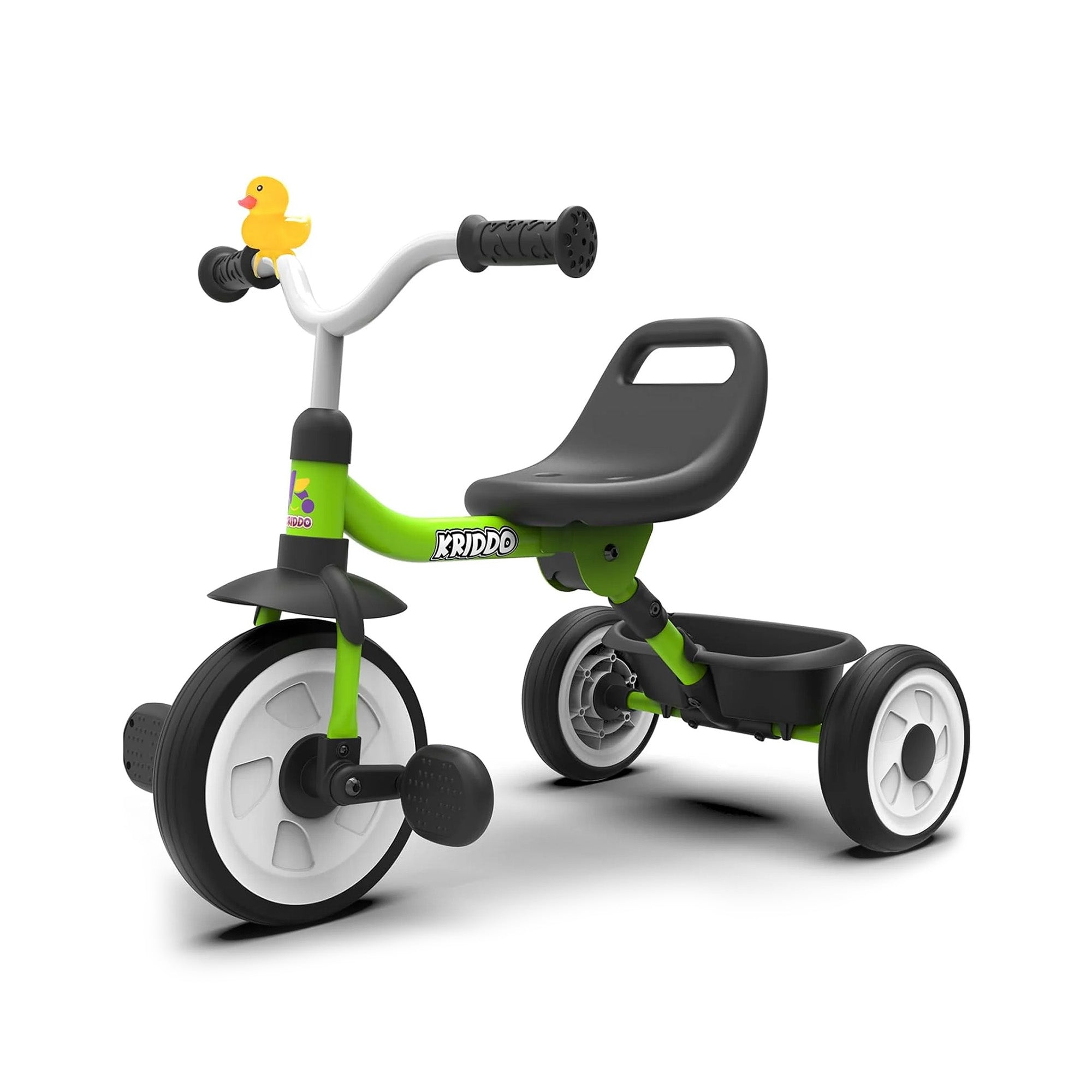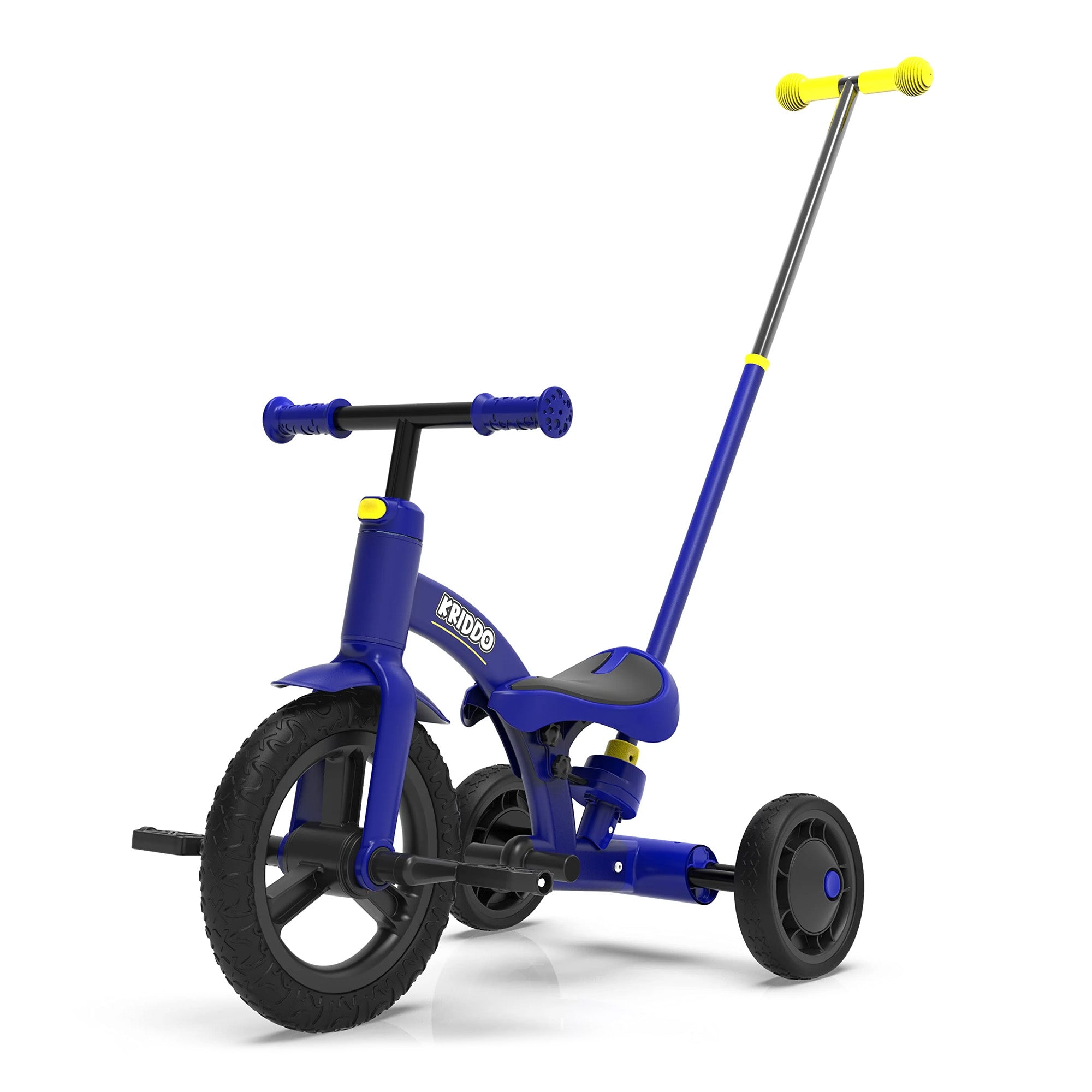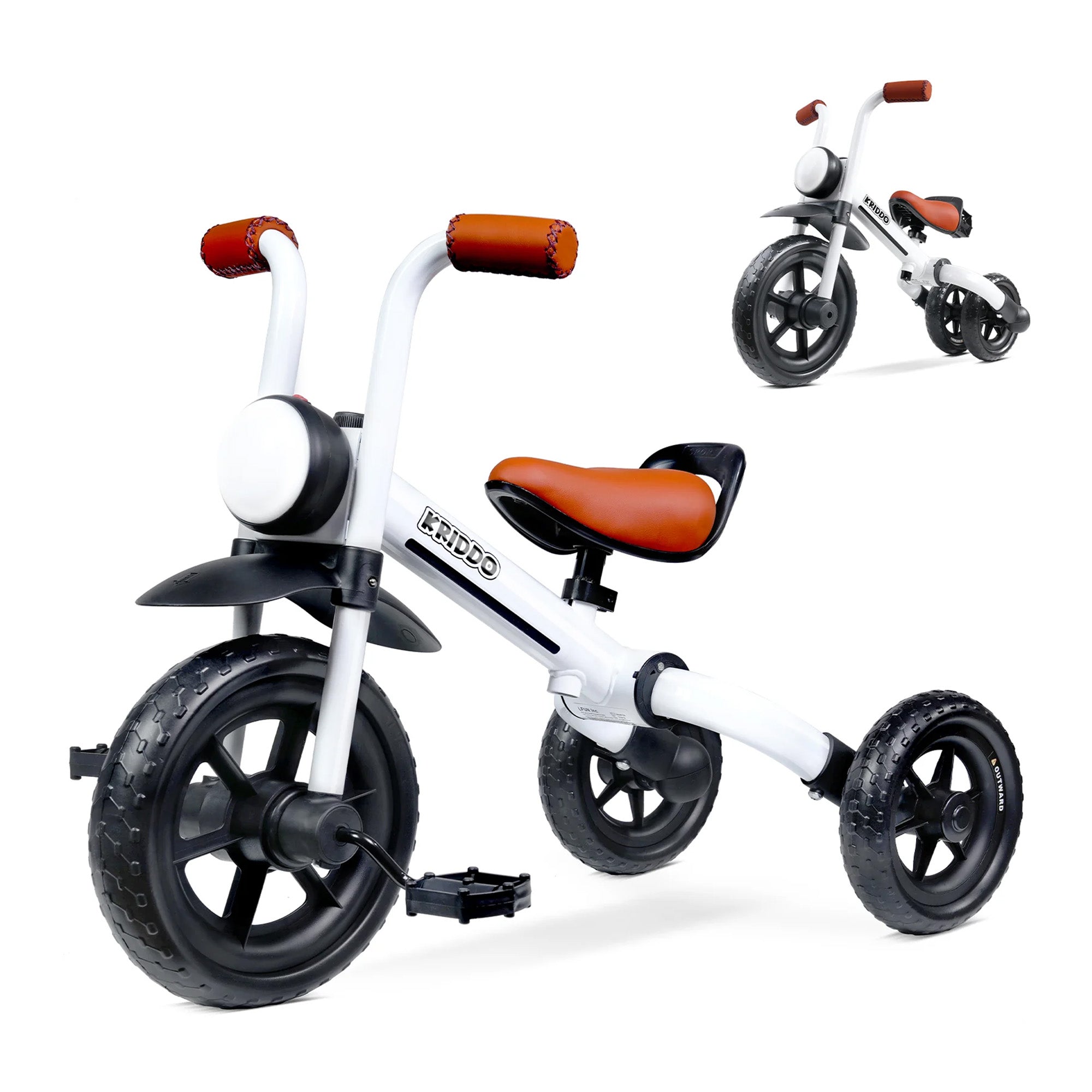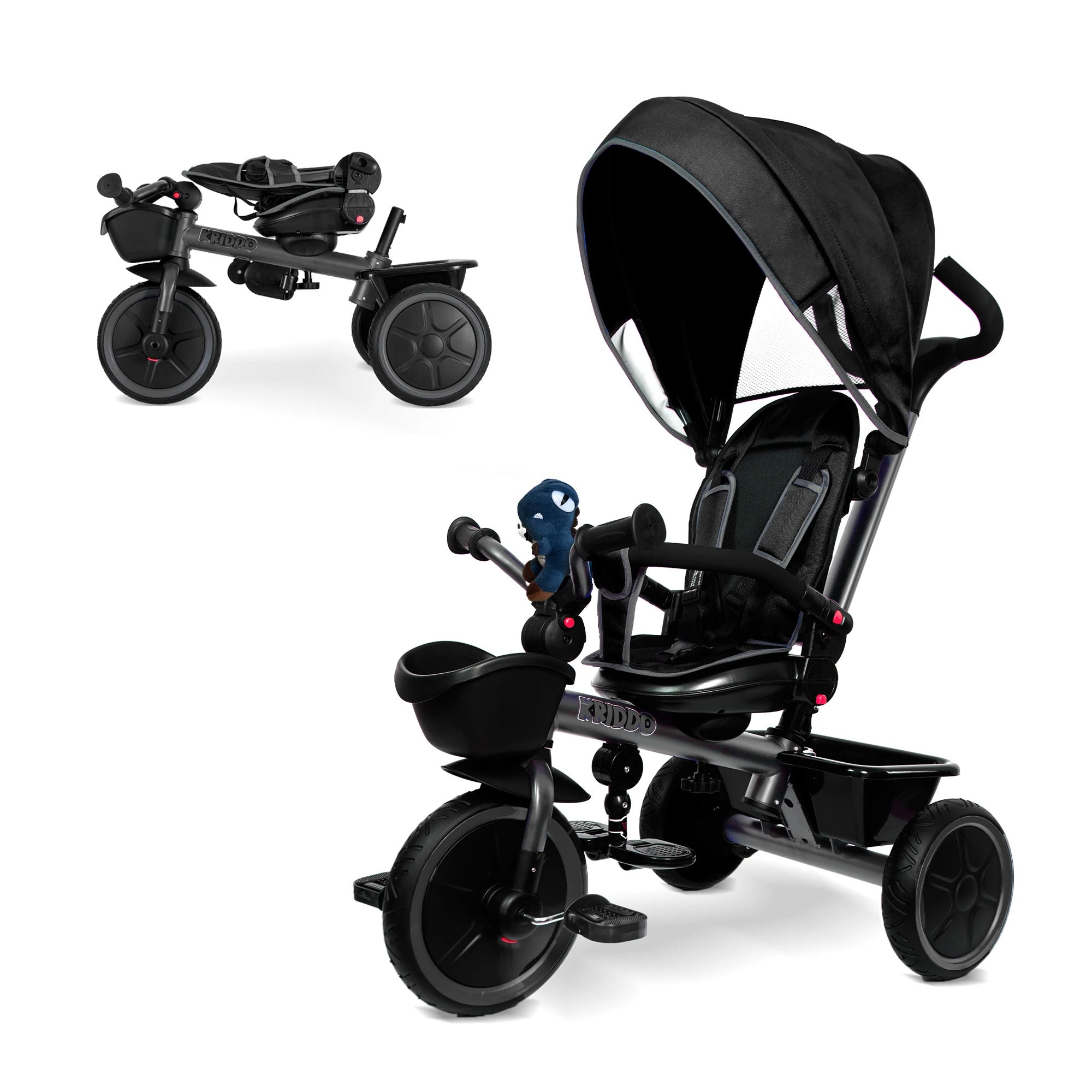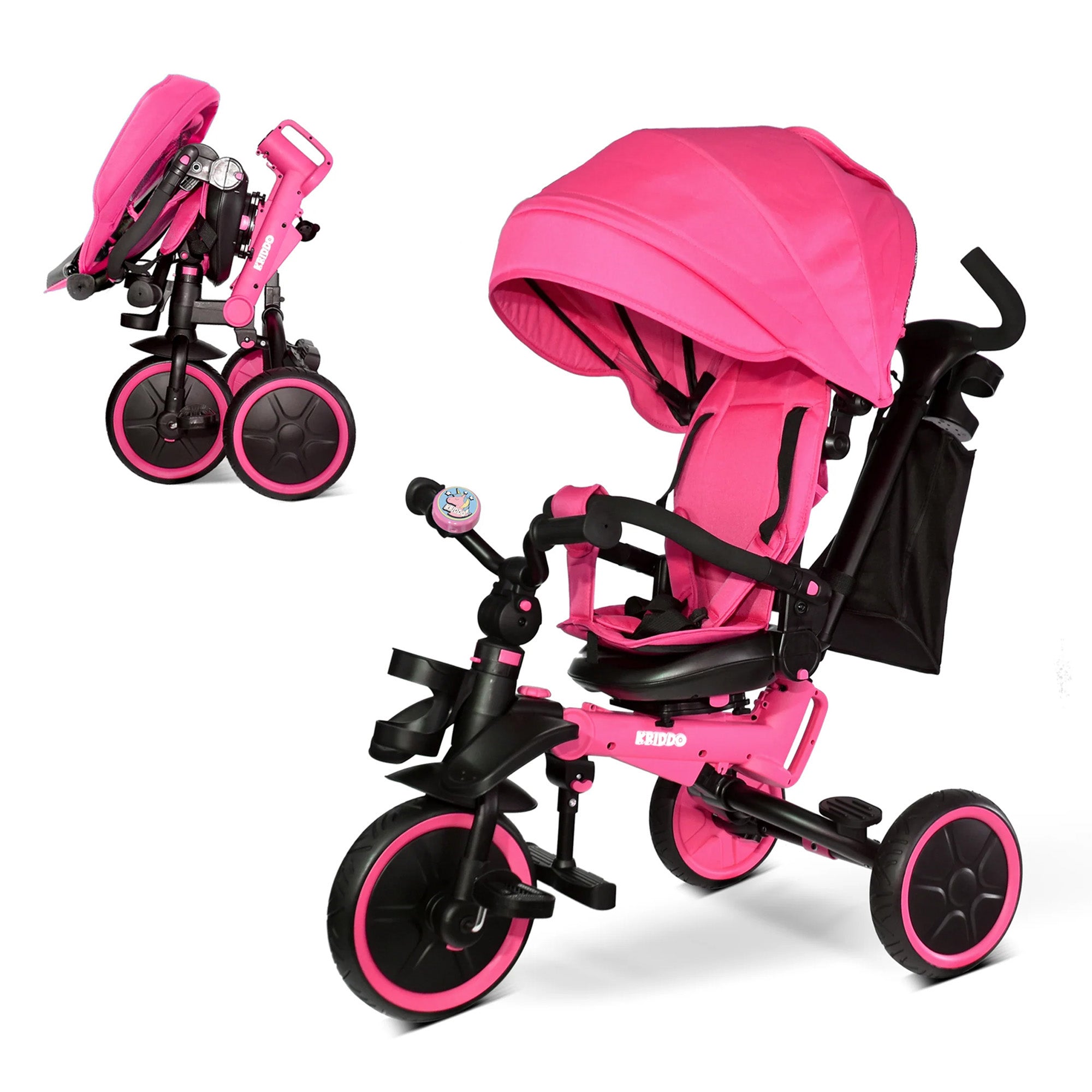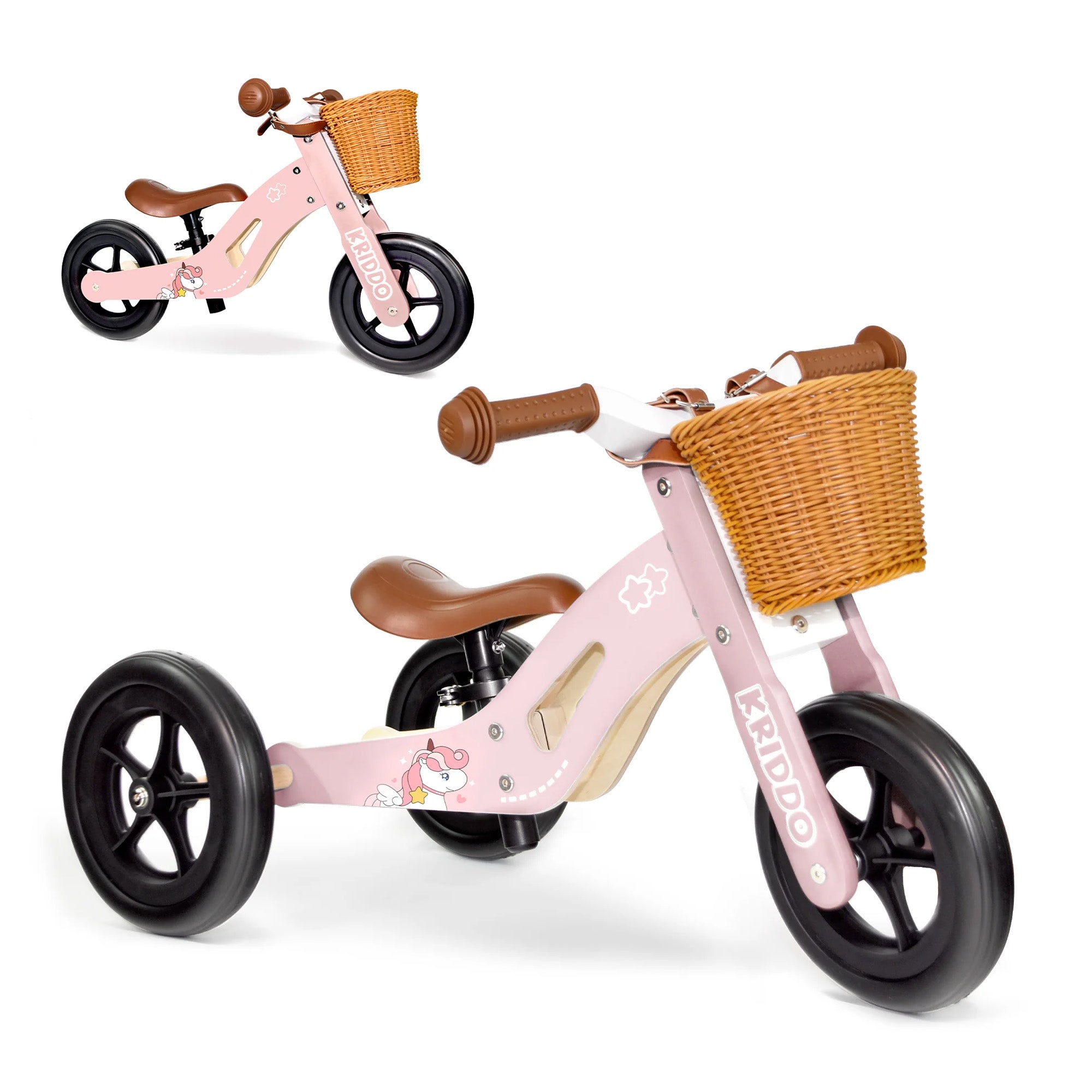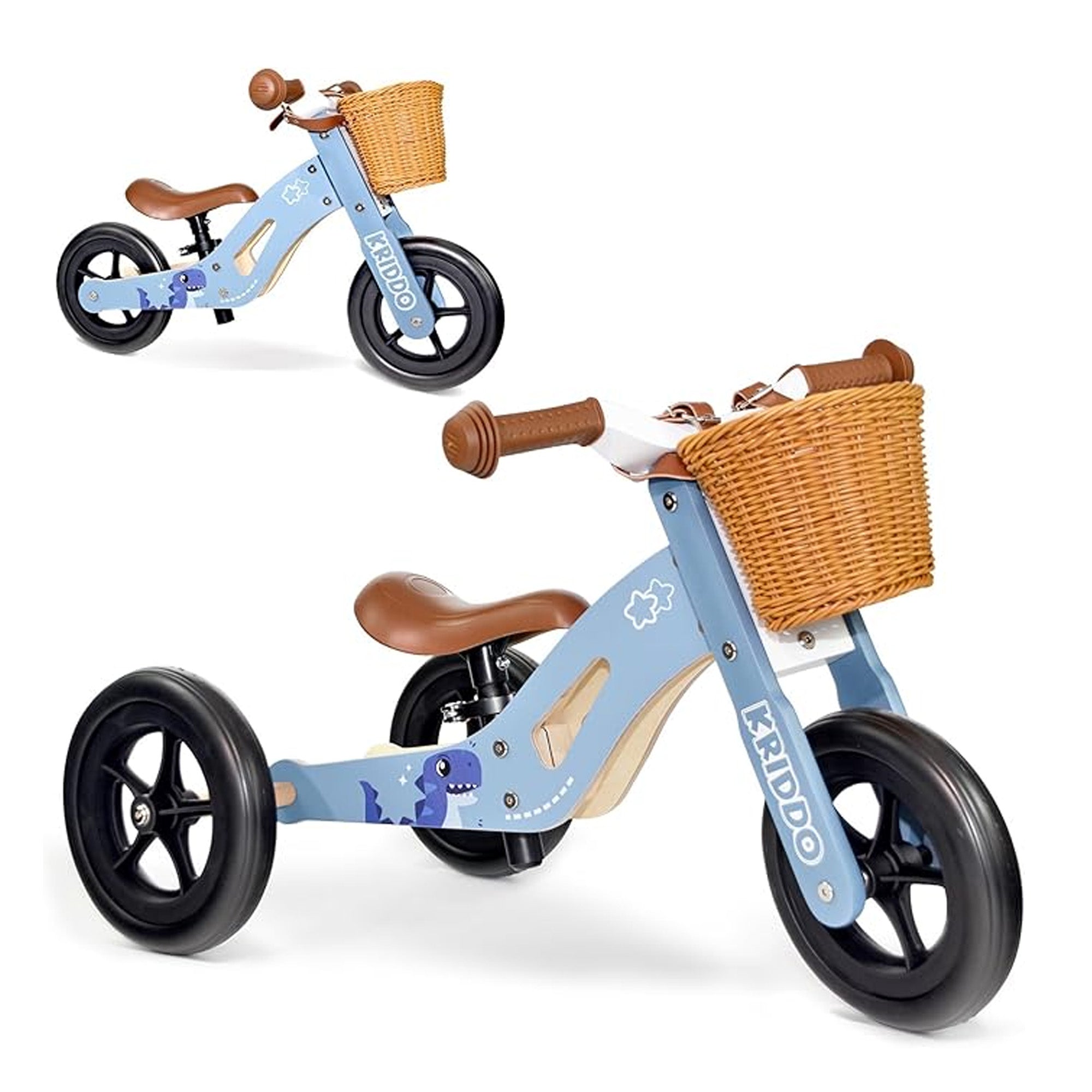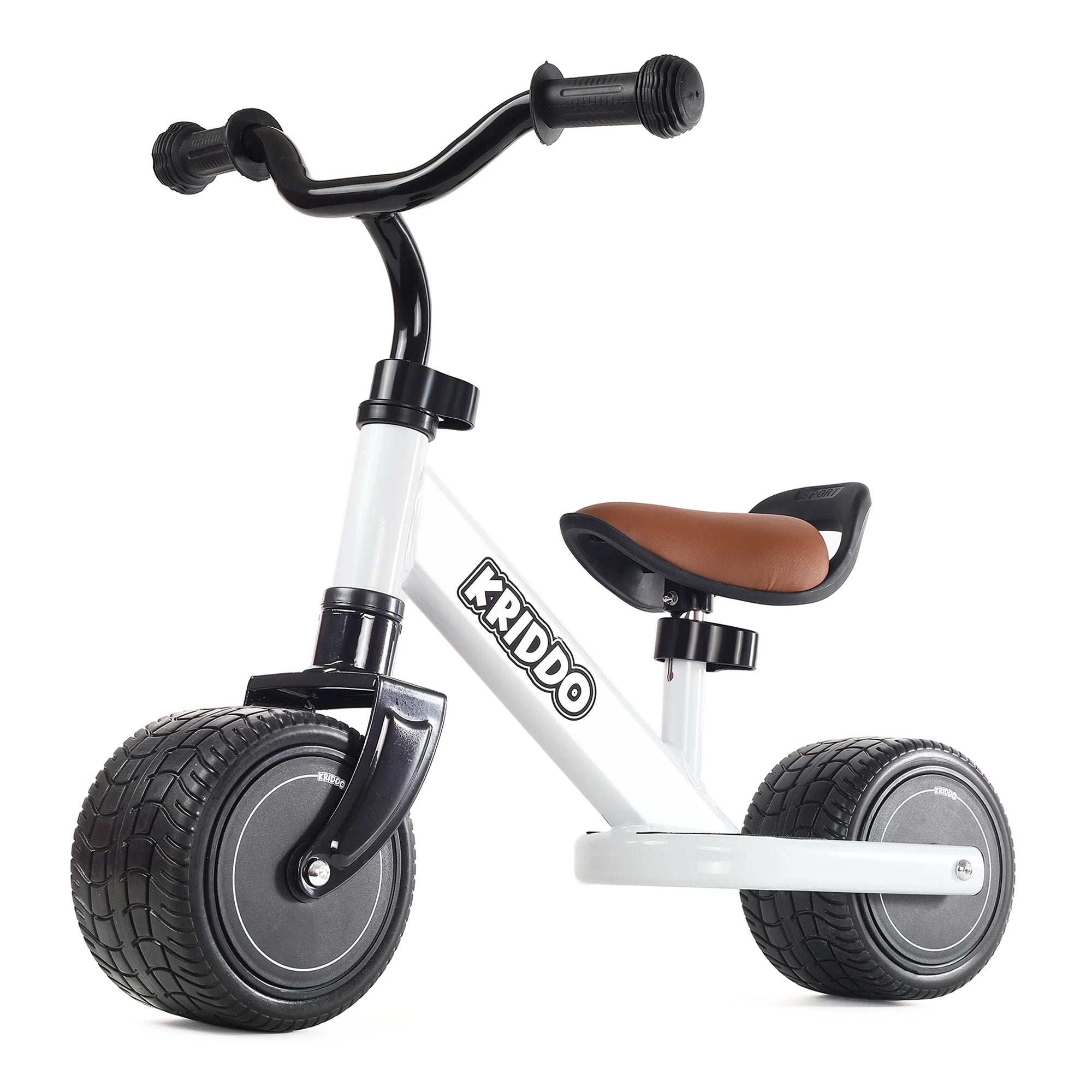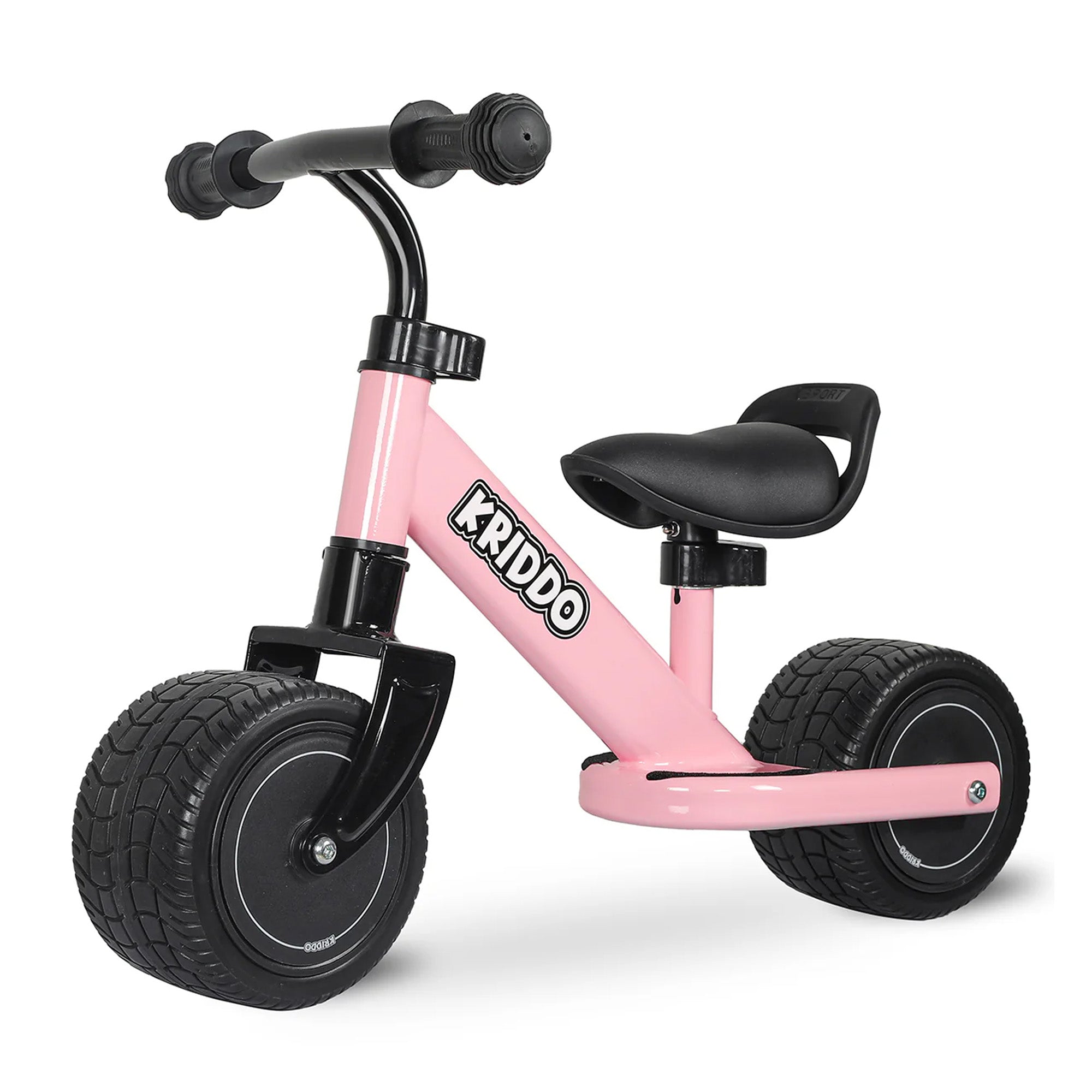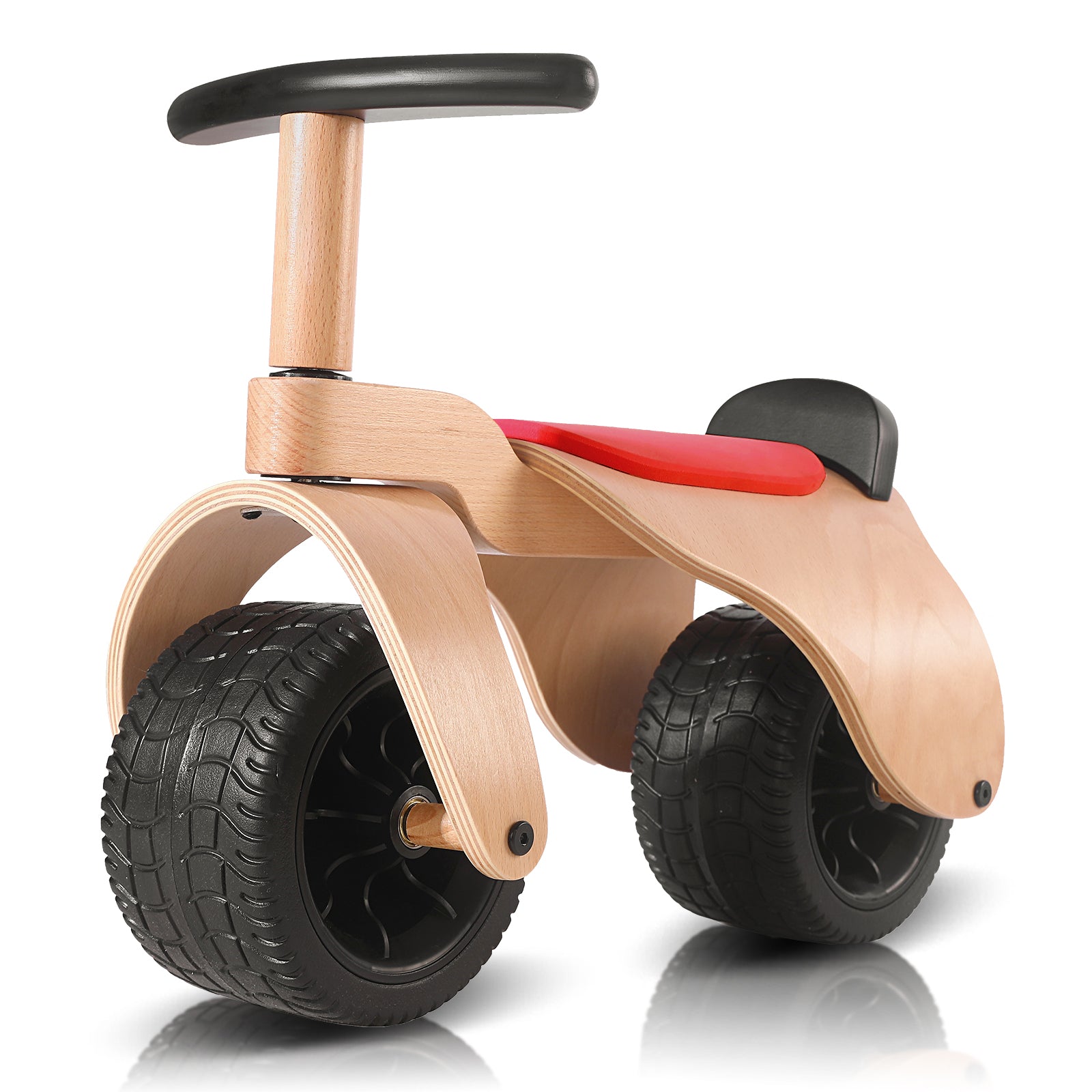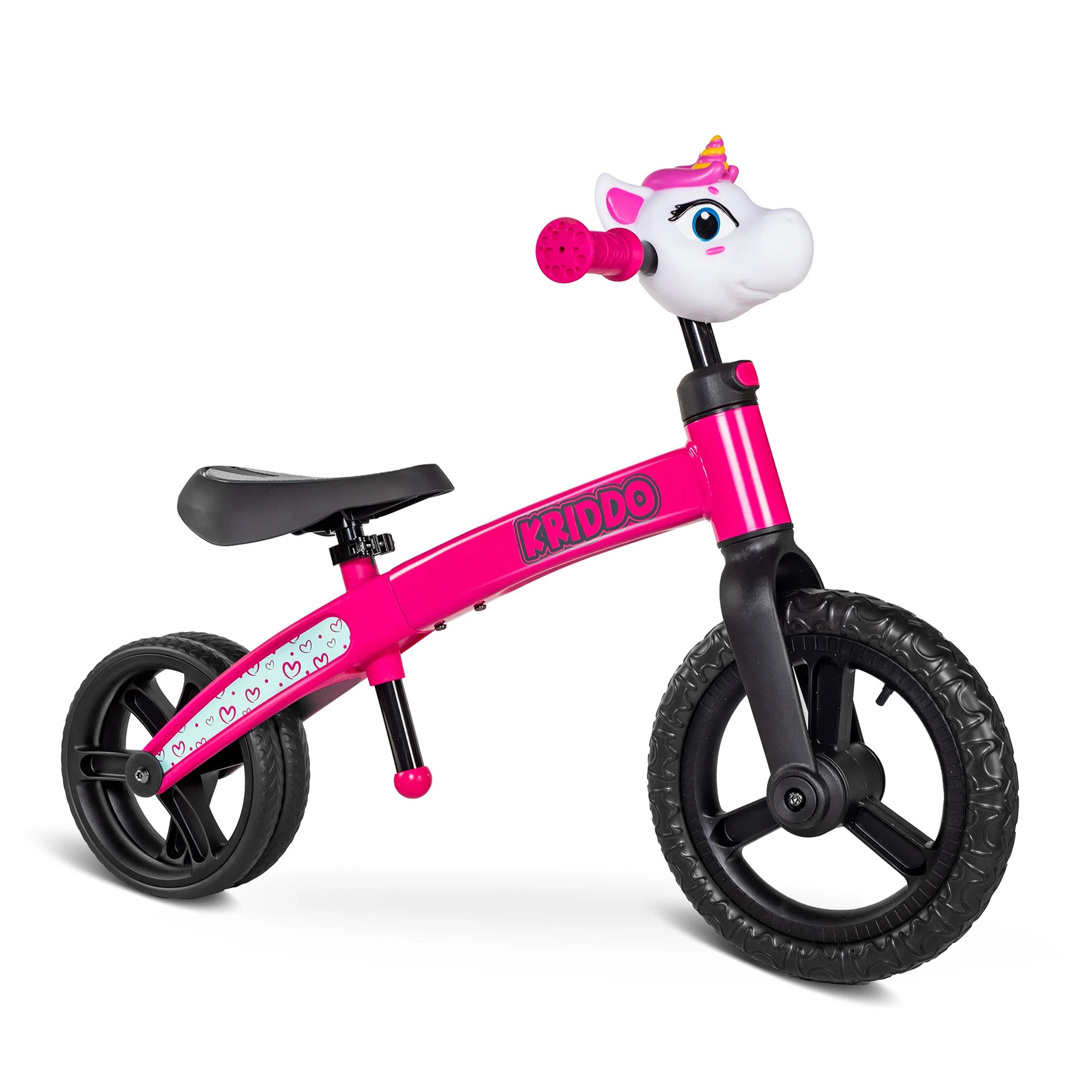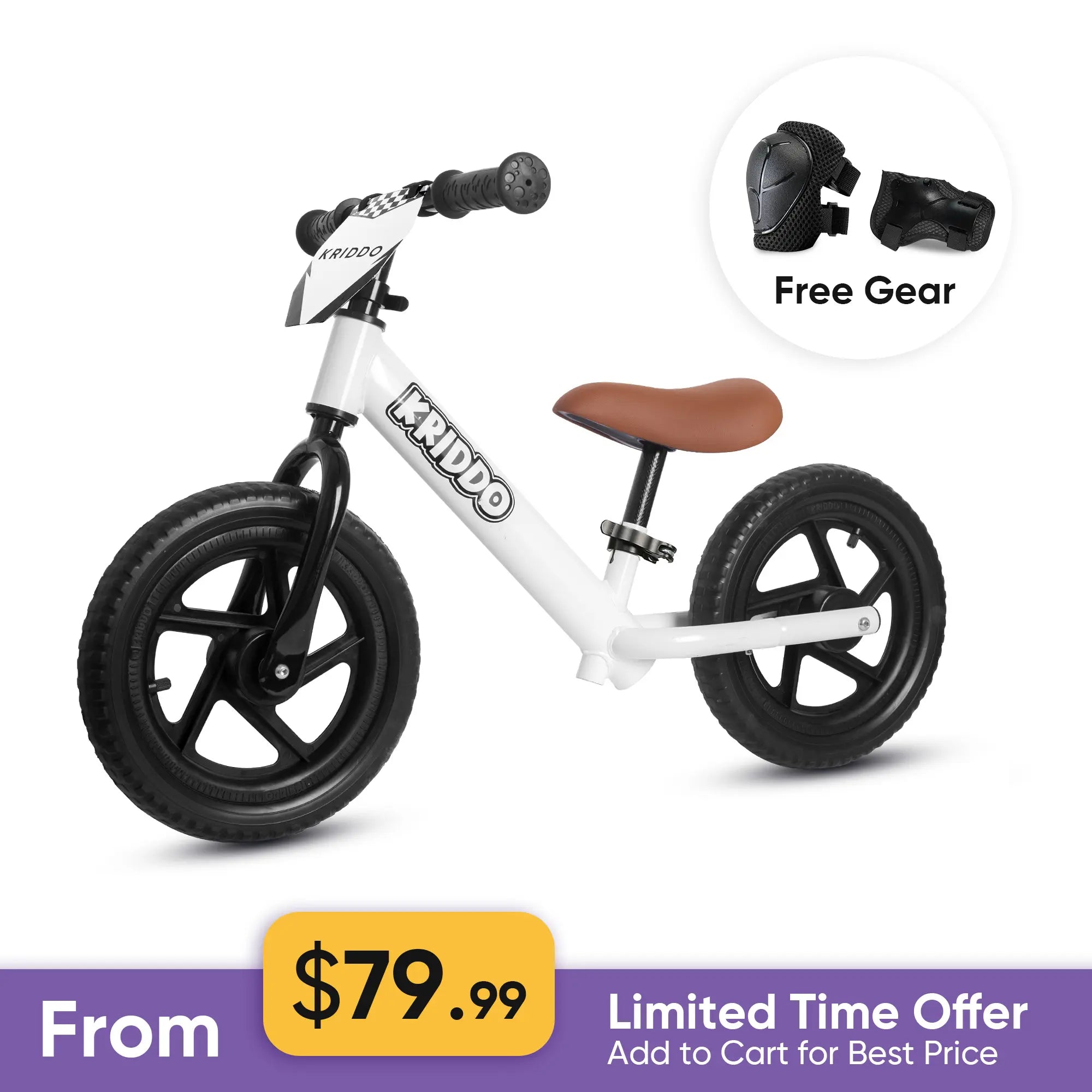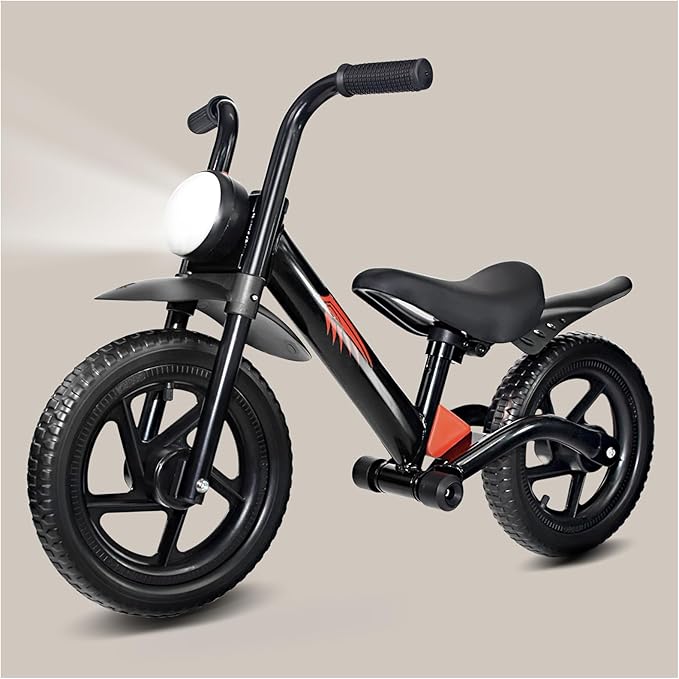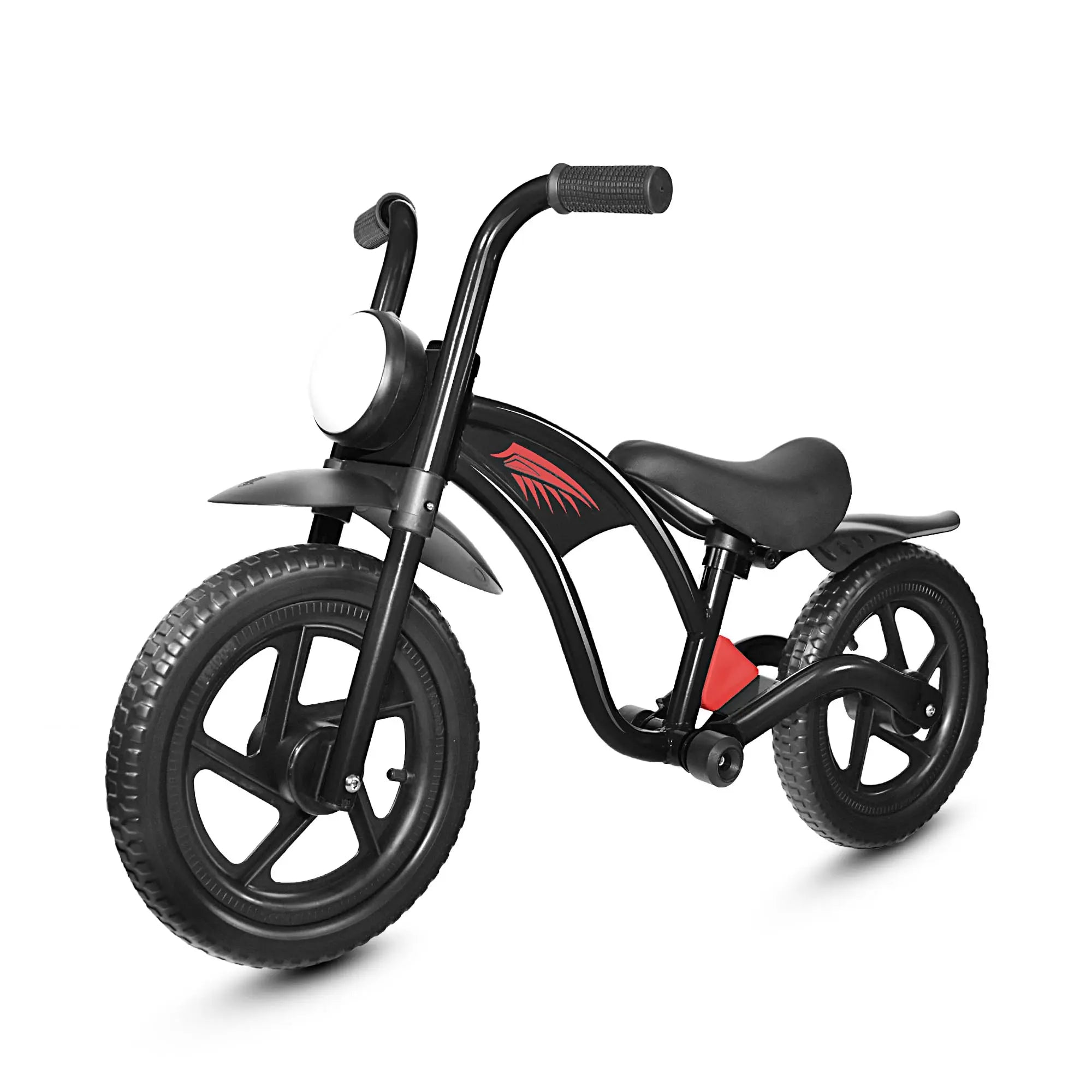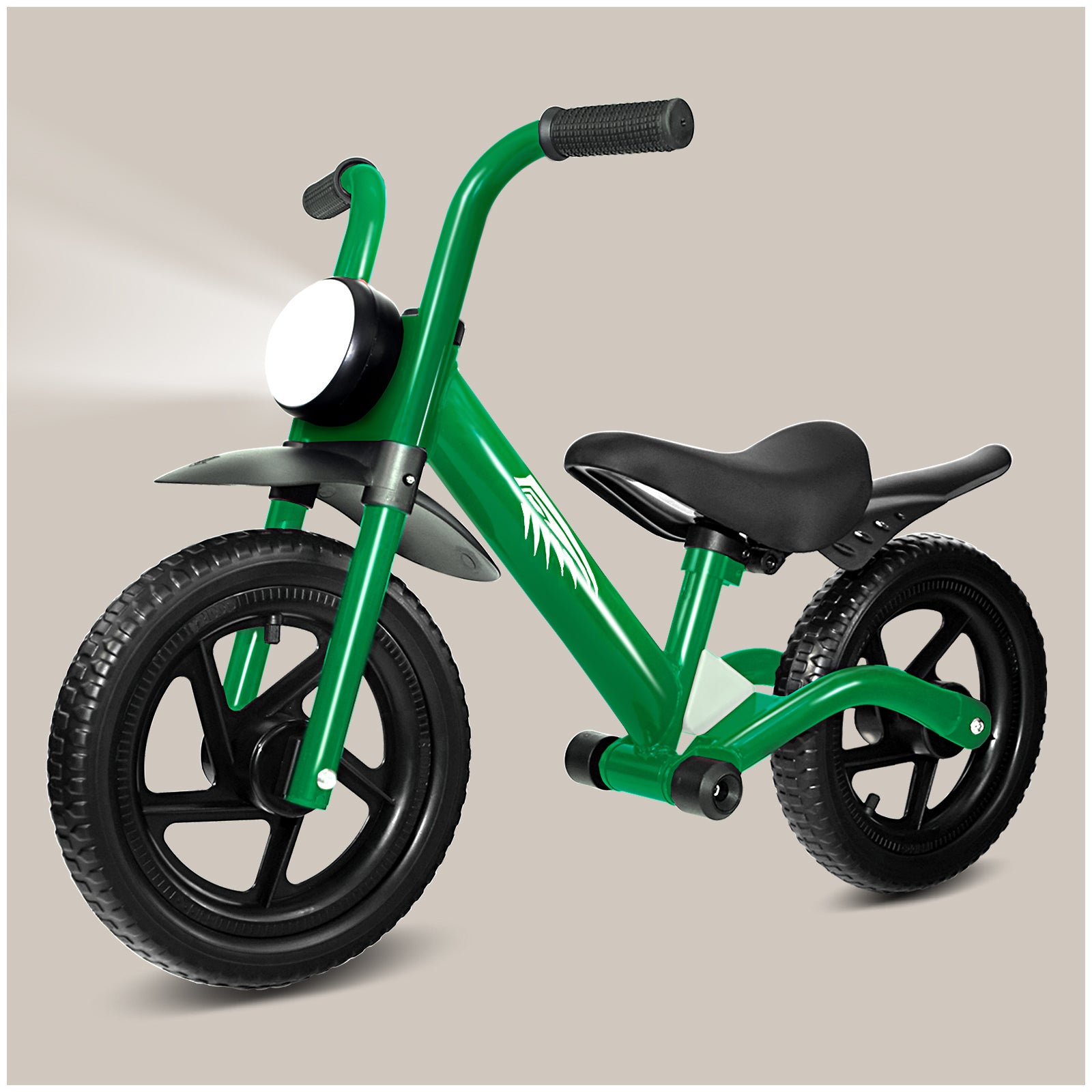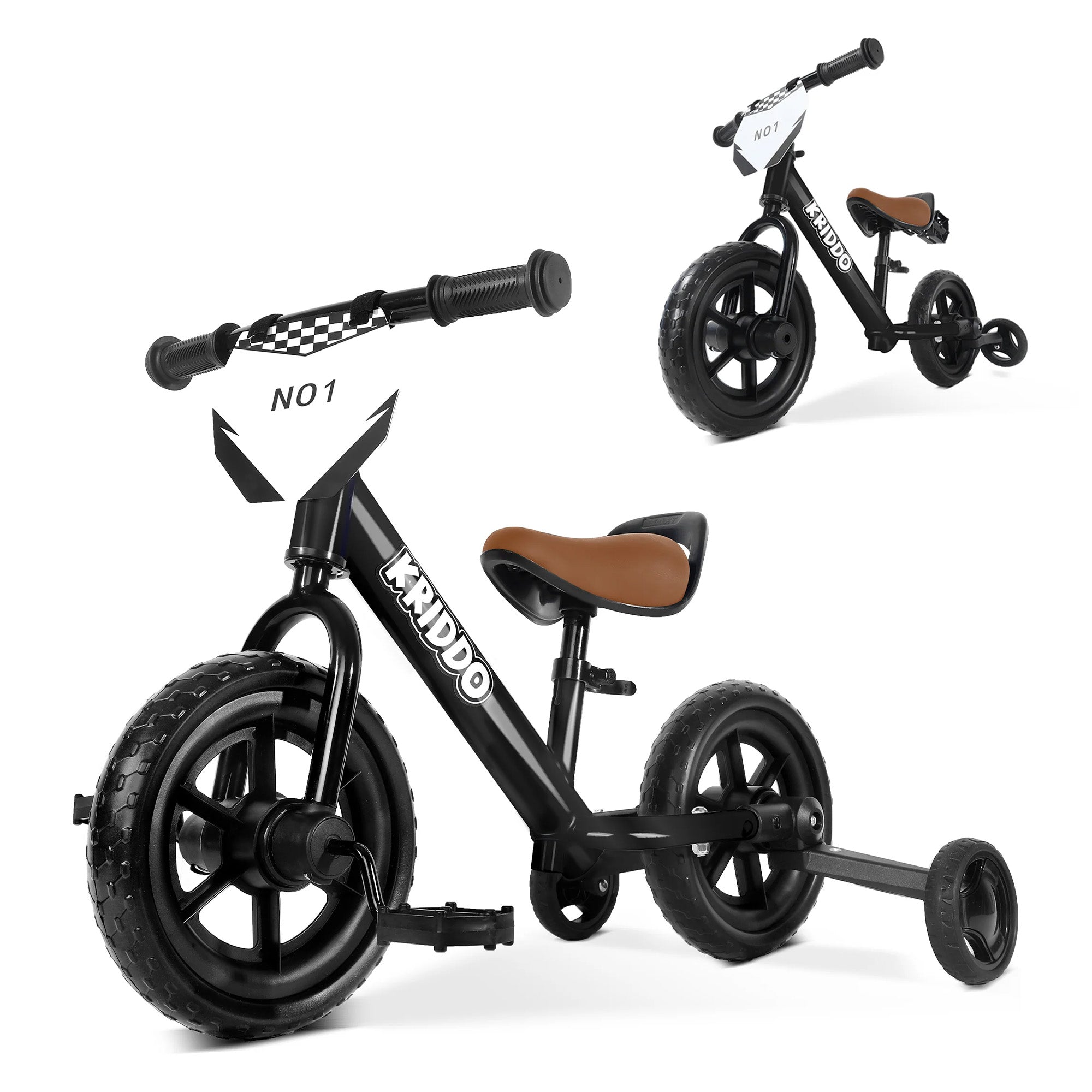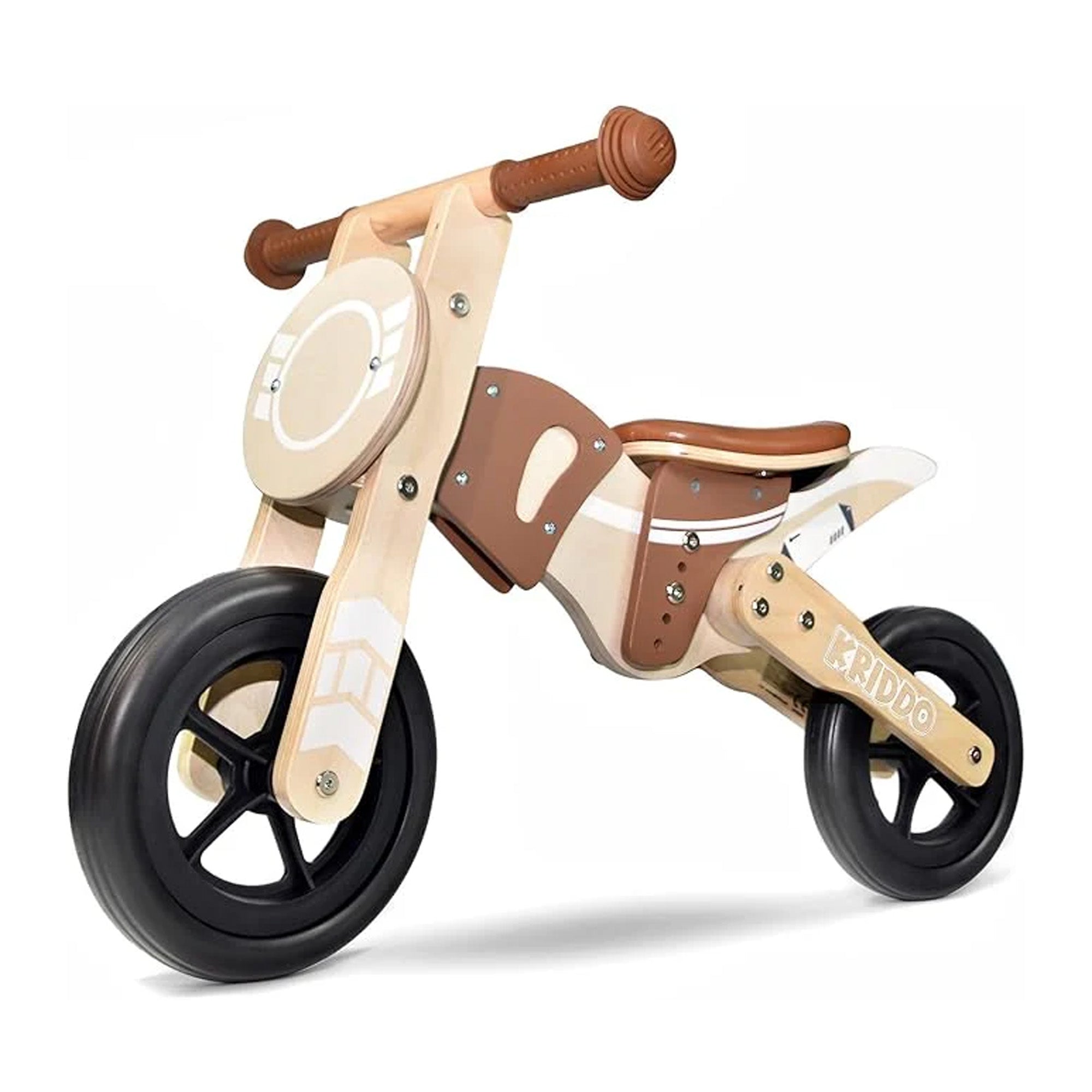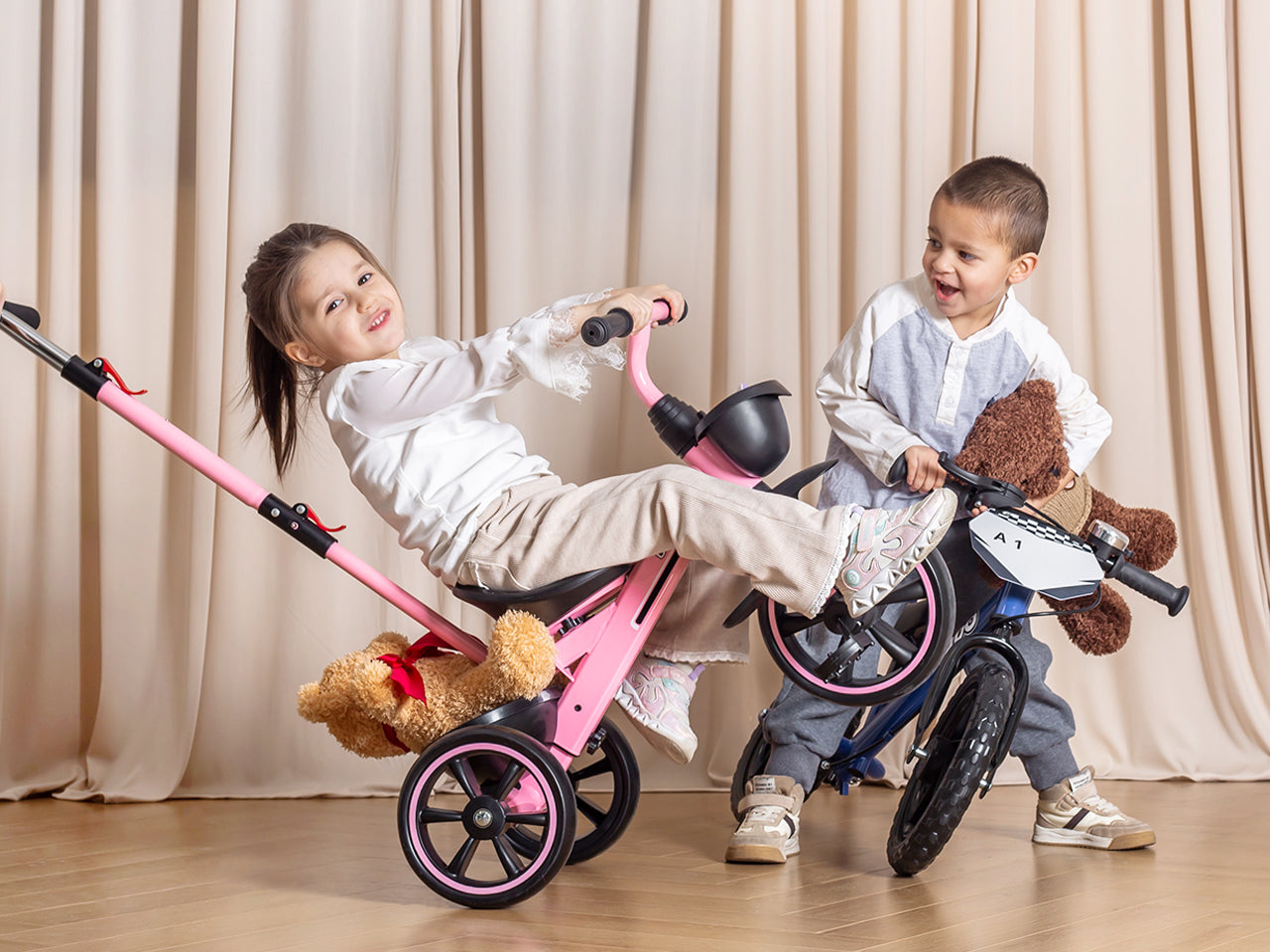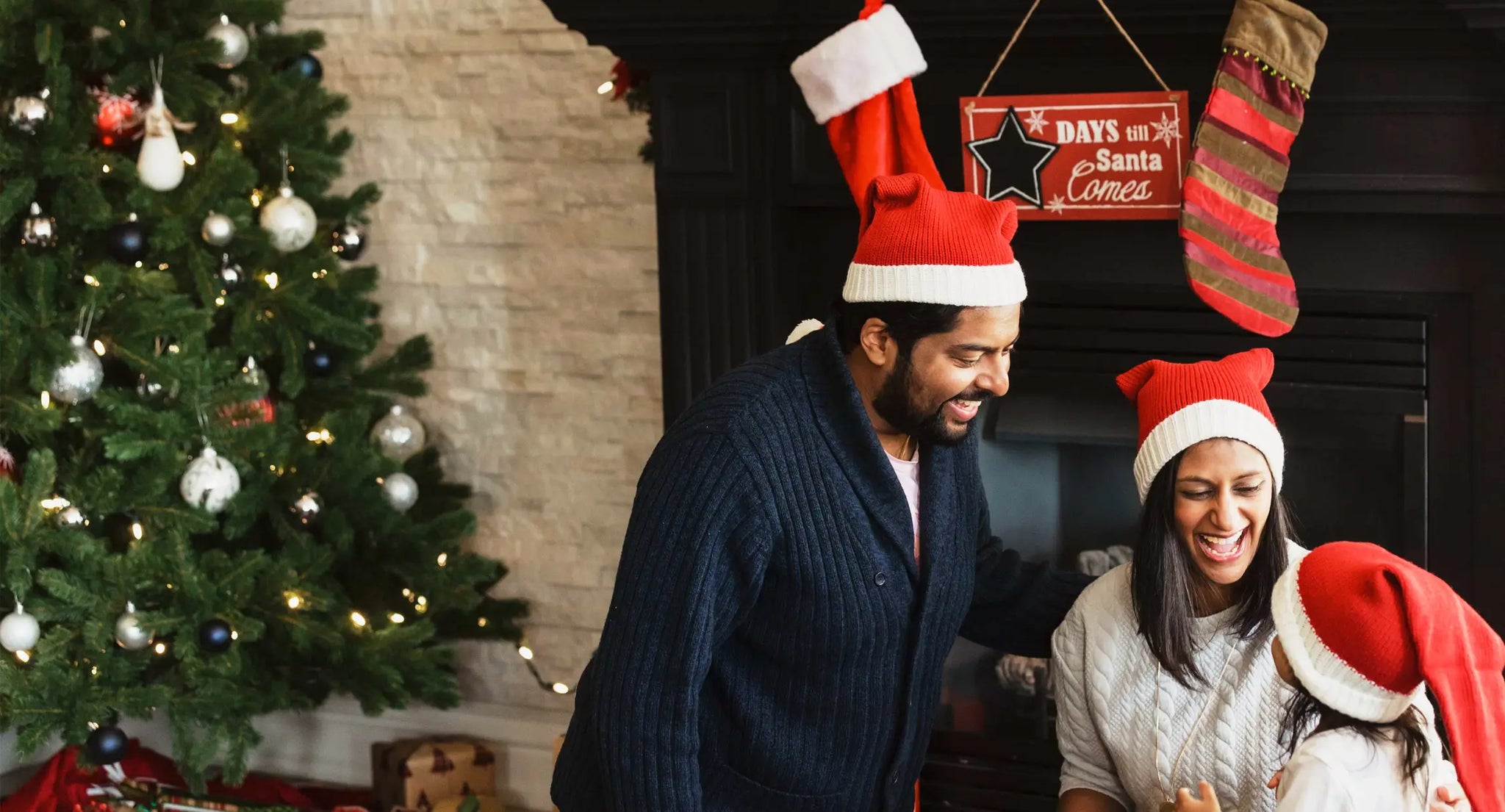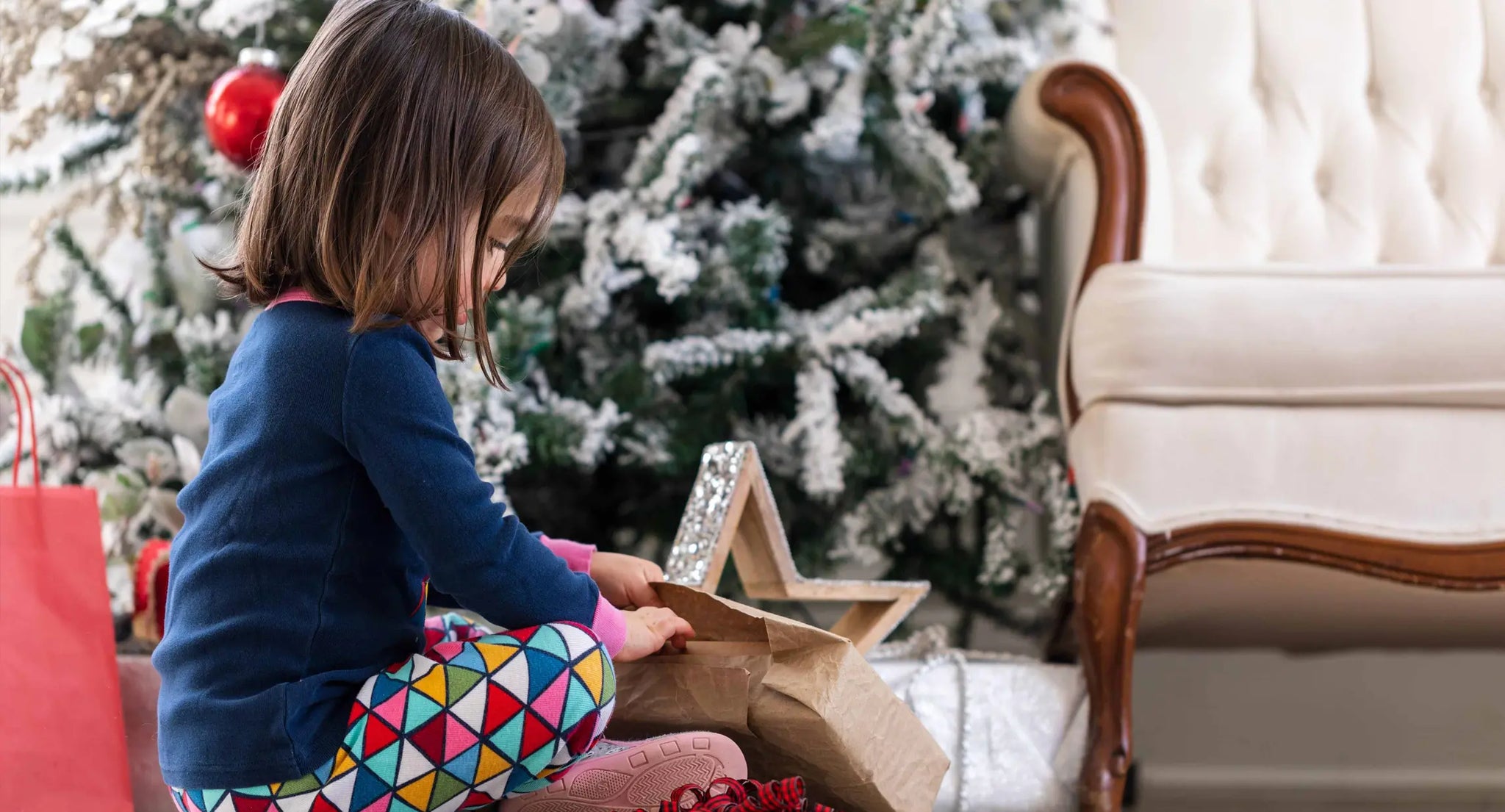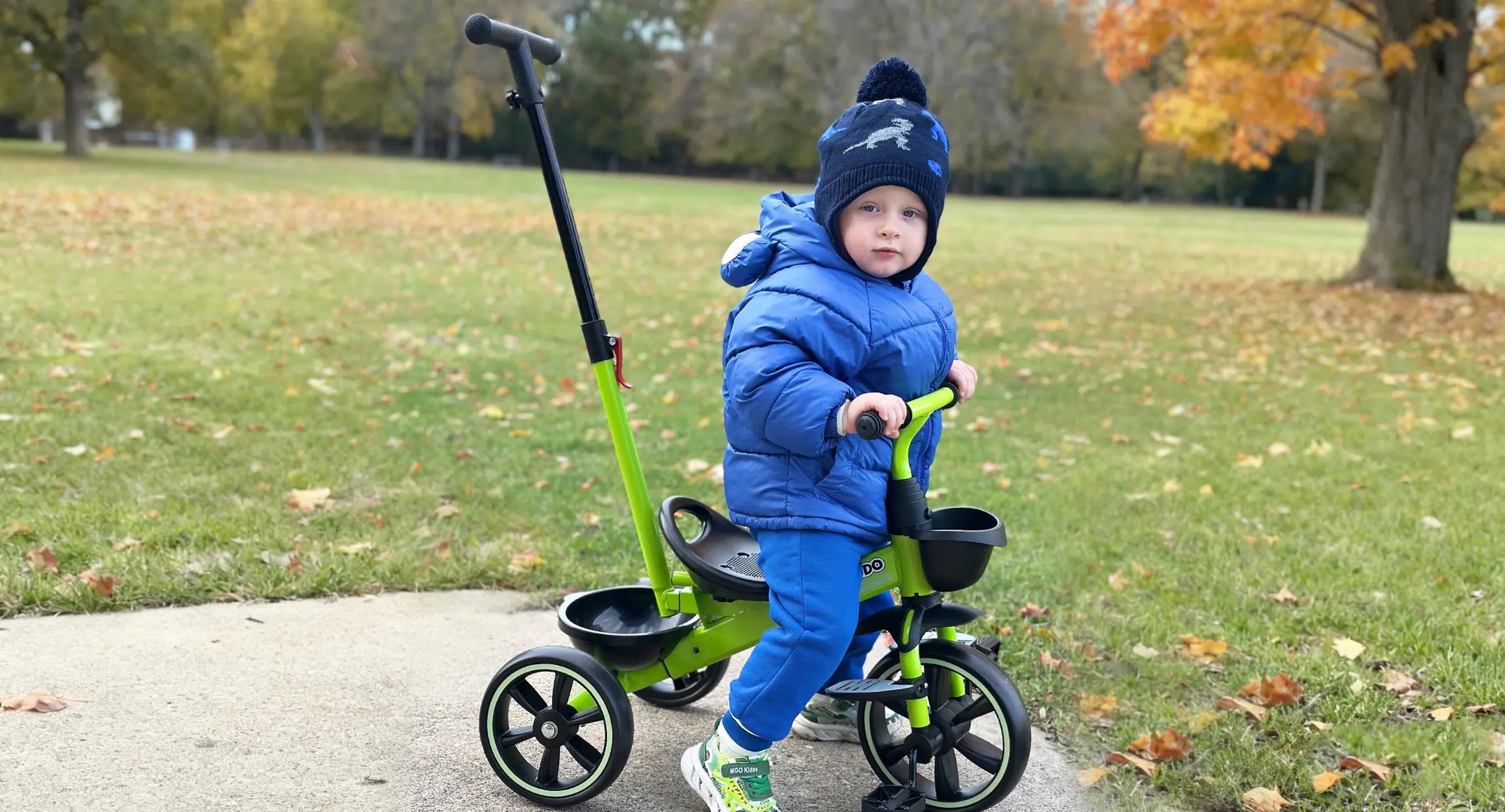Best Kids Bikes:
A Friendly Guide for Parents Who Want to Get It Right
Joe | 1st, Oct
Autumn is here, and you can almost feel that collective itch to get outdoors. It’s the season when cycling suddenly looks irresistible. For kids, a bike isn’t just a way to move around—it’s freedom, balance, and adventure all rolled into one. But for some parents, there’s a nagging thought: what if my child never really learns to ride?
It’s a common worry. Many of us grew up without truly mastering biking, which means we miss out on things like the convenience of shared bikes zipping around city streets. Understandably, parents don’t want their kids to face the same hurdle. The good news? Teaching a child to ride is far less daunting than it seems, as long as you pick the right pedal bike, add some protective gear, and give them patient guidance.
So let’s talk about the real questions: When should kids start? What’s the safest approach? What makes a bike worth buying? And yes, how much should you spend?
Summary
- Two Pathways to Learning: Training Wheels vs. Balance Bikes
- Why Biking Is a Gift for Kids’ Development
- Choosing the Right Size: It’s All About Fit
- What to Look for in a Kids’ Bike (Beyond the Basics)
- The Price Question: Cheap vs. Expensive
- Recommendations: The KRIDDO Gofar Series
- Teaching Safety Without Scaring Them
- Little Riders, Big Risks: Common Mistakes
- Teaching Without Tears
- The Emotional Side: More Than Just Wheels
How Young Is “Too Young” to Start?
Believe it or not, some toddlers are already zipping around on balance bikes before their second birthday. These little two-wheelers don’t have pedals or chains, just a lightweight frame kids push along with their feet. By the time they’re 2½ or 3, many children are ready to straddle a real bike (usually with training wheels at first).
But here’s the catch: kids develop at different rates—physically and emotionally. Some pick up balance and coordination early, while others wobble around and simply aren’t interested yet. And that’s perfectly fine. Unlike math tests or swimming lessons, biking isn’t on any official syllabus. No need to rush.
Two Pathways to Learning: Training Wheels vs. Balance Bikes


Traditionally, most children started on small bikes with training wheels. That’s still common, but there’s now another approach: letting little ones ride a balance bike for beginners first, then transitioning to pedals later.
Here’s the difference:
- Direct-to-pedal learning – Your child hops on a kids’ bike with training wheels, pedals right away, and eventually ditches the supports.
- Balance-first approach – Your child starts with a balance bike, mastering stability before worrying about pedaling. Later, moving to a regular bike feels almost natural.
Many experts (and parents) swear by balance bikes. They teach kids the hardest skill—balance—without distractions. Plus, kids love the glide feeling, which makes them eager to keep practicing. Historically, the very first “bicycles” were actually balance bikes without pedals, so in a way, this method feels like going back to cycling’s roots.
But a word of caution: balance bikes are fun, but once your child gets the hang of them, they may dart off faster than you can run. If your little speedster has limited awareness of traffic or obstacles, you’ll need sharp eyes and fast legs to keep up.
Why Biking Is a Gift for Kids’ Development
Parents often ask: Is biking really worth the hassle of teaching, falls, and scraped knees? Absolutely. Riding a bike has benefits that reach far beyond transportation. In fact, studies and child development experts keep highlighting these perks:
- Growth boost – Biking is a vertical exercise, stimulating leg joints and encouraging healthy bone growth. Yes, it can literally help kids grow taller.
- Weight management – Since biking is an aerobic activity, it burns calories, strengthens the heart, and supports a healthy weight.
- Balance and reflexes – Cycling sharpens coordination, balance, and neural responsiveness.
- Nature time – Outdoor cycling means fresh air, sunlight, and freedom—elements every growing body and mind needs.
- Family bonding – Teaching and riding together builds connection. Kids learn resilience, confidence, and teamwork with their parents by their side.
So yes, those scraped knees? They’re part of something bigger.
Choosing the Right Size: It’s All About Fit

Now, onto the practical side of things: bike sizing. This part confuses a lot of parents. You’ve probably heard of “12-inch bikes” or “20-inch bikes.” What do those numbers mean? Simple: they refer to the diameter of the wheels.
Here’s a quick size reference table:
| Wheel Size | Suggested Age | Suitable Height |
|---|---|---|
| 12-inch | 2–5 years | 33.5"–35.4" |
| 16-inch | 4–8 years | 38.9"–48.1" |
| 20-inch | 5–10 years | 45.3"–53.2" |
| 24-inch | 8–12 year | 51.2"–59.1" |
Each manufacturer tweaks the recommendations slightly, especially for kids over 8, but these ranges are a good starting point. The key is that your child should be able to reach the pedals comfortably and put their feet flat on the ground when needed.
What to Look for in a Kids’ Bike (Beyond the Basics)
Buying a child’s bike isn’t just about size. When choosing the perfect bike, the details matter more than you think. Let’s break down the essentials:
- Smooth edges – No sharp parts or protrusions. Kids fall often, and you don’t want injuries from the bike itself.
- Covered chain – An exposed chain is a hazard. Kids will poke at it, and fingers can get caught. A full cover keeps little hands safe.
- Kid-friendly brakes – This is huge. Children’s hands are small, and many bikes are designed as if for adults. Make sure the brake levers are easy to grip and pull. A V-brake is generally safer and simpler than disc brakes for young riders.
- Weight – There’s debate here. Heavier bikes feel stable, lighter ones are easier to carry and maneuver. If you’re the one lugging it up stairs, lighter usually wins.
- Adjustability – Kids grow like weeds. A bike with adjustable handlebars and seat height buys you extra time before needing the next size up.
- Training wheels – If included, check that they’re sturdy. Weak ones bend easily and may cause side falls. But remember, training wheels are temporary—remove them as soon as balance improves.
The Price Question: Cheap vs. Expensive
Parents often whisper the same question: How much should I really spend on a kids’ bike? The short answer: whatever fits your budget. The longer answer is more nuanced.
Some families see a $200 kids’ bike as expensive, given the abundance of public bikes around. Others treat it like an investment—especially if their child might move into competitive cycling.
High-end bikes cost more because they’re lighter, smoother, and made with premium materials. Their brakes and gears are precise, their wheels glide effortlessly, and they endure rough conditions. For competitive kids, these features matter.
But let’s be honest: most children aren’t racing mountain trails. They’re circling the block or riding around the park. Do they really need aerospace-grade wheels? Probably not.
A thoughtful perspective on this is explored in cheap vs. expensive kids’ bikes.
Recommendations: The KRIDDO Gofar Series
If you’re after specific models, KRIDDO has designed bikes with children’s needs in mind. Let’s look at two popular ones:
Why Parents Love Them:
- Front hand brake + rear coaster brake for reliable stopping power
- Full chain guard to protect little hands and clothes
- Thick rubber tires for solid grip and smooth rides
- Fun personalization: customizable nameplate, DIY stickers, and a classic bell
- 14 & 16 inch wheels with detachable training wheels
So, your child now has the right bike. The helmet’s strapped on, the brakes work, and you’re ready for that first family ride. Here’s the tricky part though: biking isn’t just about balance and pedals. It’s also about habits, awareness, and safety. Many parents overlook this, assuming kids can be trusted once they stop wobbling. The truth is, road safety takes years of practice and guidance.
The Golden Rule: No Roads Yet
Let’s face it: young kids and traffic don’t mix. Even if your child rides smoothly around the park, the street is another story. Cars, blind spots, and sudden turns create risks that a 7-year-old brain simply isn’t wired to handle.
Here’s the first rule you should set: biking is only for parks, courtyards, or other safe play areas—not for busy roads.
And don’t just say it once. Repeat it. Reinforce it. Kids thrive on clear boundaries, and safety rules are no exception.
Teaching Safety Without Scaring Them

Here’s a small parenting paradox: you want your child to take biking seriously, but you don’t want to terrify them into avoiding it. The balance lies in awareness.
Some tips that actually work:
- Use real examples – Point out common mistakes in a calm way: “See that rider? They didn’t look before turning—that’s dangerous.”
- Show them blind spots – Walk your child around a parked car and ask if they can see the driver’s seat. They’ll quickly realize how invisible they are to drivers.
- Create habits early – Encourage them to glance left, right, and behind before turning, even in the park. Habits formed in safe areas stick for life.
For more structured advice, kids’ bicycle safety etiquette offers practical strategies.
Parents Lead by Example
Ever notice how kids copy almost everything? If you roll through red lights, guess what your child will think is okay?
The best thing you can do is demonstrate safe cycling yourself:
- Stop at signals.
- Use your bell when passing.
- Keep a safe distance from parked cars (yes, doors swing open).
When you talk through your thought process aloud—“Let’s slow down here; that car might pull out”—you’re teaching safety in real time.
Little Riders, Big Risks: Common Mistakes

Even the most confident young cyclist has blind spots—literally and figuratively. Some common pitfalls:
- Swerving suddenly – Kids often turn without warning.
- Riding too close to cars – They don’t think about doors opening.
- Looking only ahead – Many forget to check behind before turning.
- Overusing brakes – A sudden squeeze can cause skids or falls.
That’s why supervision isn’t just about walking beside them. It’s about anticipating these moves before they happen.
Teaching Without Tears
Helping your child learn to ride can test your patience. You’ll want to grab the handlebars or push them faster—but resist the urge. A better way:
- Start small – Empty parking lots or grassy fields are perfect. Grass softens falls, which are inevitable.
- Hold lightly – Steady the seat, not the handlebars. Let them feel the balance shift.
- Cheer more than correct – Confidence is half the battle. Encourage every little success.
And here’s the thing: if they’re not ready, don’t force it. Sometimes the best lesson is waiting a few weeks and trying again.
Building Long-Term Habits
Once your child has the basics, focus on habits that stick:
- Always wear a helmet, even for “just five minutes.”
- Park the bike neatly (teaches responsibility).
- Slow down near pedestrians.
- Ring the bell before passing.
These aren’t just rules—they’re building blocks of respect and awareness.
A Quick Word on Gear
Yes, bikes matter. But helmets, elbow pads, and knee pads are equally important. For younger kids especially, protective gear turns falls into “funny tumbles” instead of scary injuries. Choose gear that fits snugly and feels comfortable. If kids hate wearing it, they won’t.
The Emotional Side: More Than Just Wheels

Here’s something parents sometimes forget: biking isn’t just about mobility. It’s about identity.
For a child, that first successful ride is pure magic—like suddenly discovering they can fly. It builds independence, self-confidence, and pride. And when parents are there cheering, it strengthens bonds in ways few other activities can.
That’s why choosing the best kids bikes isn’t just a shopping decision. It’s an investment in memories, character, and growth.
Wrapping It Up
So let’s put it all together:
- Start early with balance bikes or training wheels.
- Pick the right size so your child feels comfortable and secure.
- Choose safe features like covered chains and child-friendly brakes.
- Balance price and value—most kids don’t need pro-level bikes.
- Teach habits that make biking safe, fun, and sustainable.
When you combine these elements, you’re not just giving your child a bike—you’re giving them freedom, confidence, and joy.







